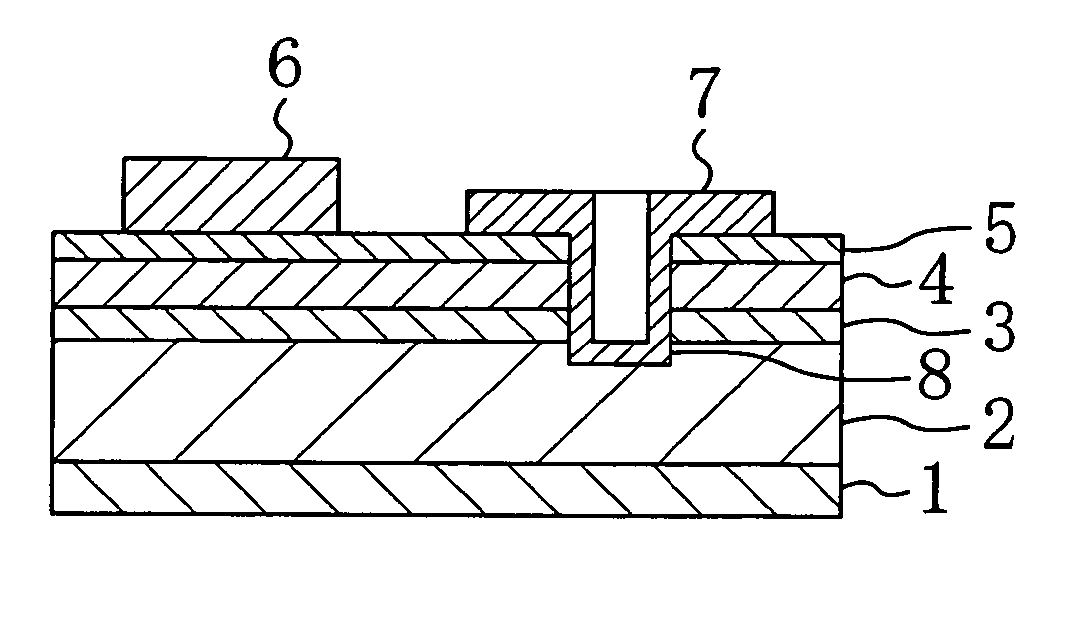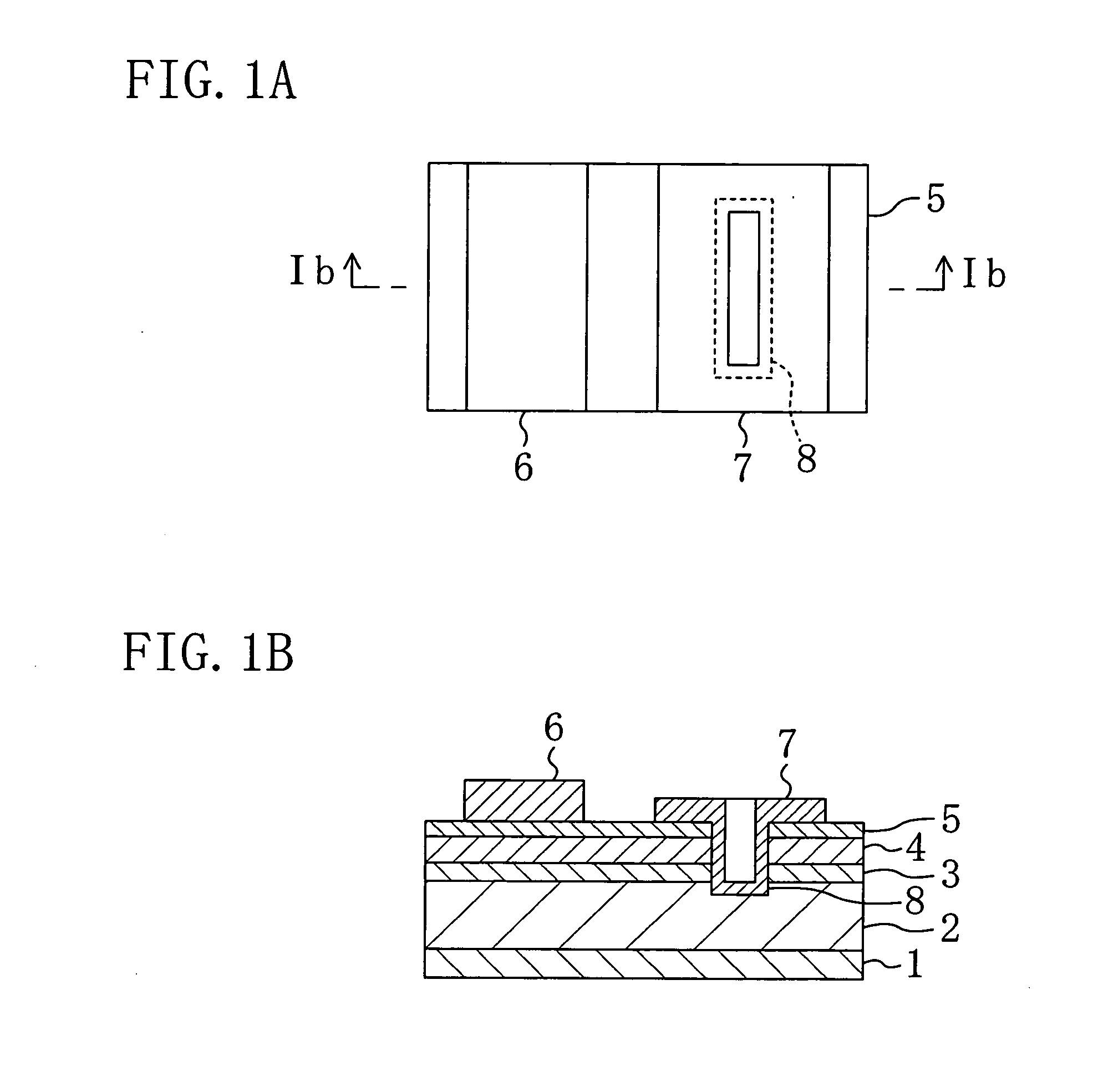Schottky barrier diode and diode array
a technology of diodes and arrays, applied in the direction of diodes, semiconductor devices, semiconductor/solid-state device details, etc., can solve the problems of small chip area and low resistance of schottky barrier diodes, and achieve the effect of small chip area and low on resistan
- Summary
- Abstract
- Description
- Claims
- Application Information
AI Technical Summary
Benefits of technology
Problems solved by technology
Method used
Image
Examples
embodiment 1
[0054]FIGS. 1A and 1B show the structure of a Schottky barrier diode (SBD) of Embodiment 1 of the invention, and specifically, FIG. 1A is a plan view thereof and FIG. 1B is a cross-sectional view thereof taken on line Ib-Ib of FIG. 1A.
[0055] As shown in FIG. 1B, a buffer layer 3 of aluminum nitride (AlN) with a thickness of 100 nm is formed on a conductive n-type silicon (n+-Si) substrate 2. The buffer layer 3 has very high resistance because it includes a large number of crystal defects derived from a difference in the lattice constant between the crystal of the buffer layer 3 and the crystal of the n+-Si substrate 2.
[0056] A first semiconductor layer 4 of undoped gallium nitride (GaN) is formed on the buffer layer 3, and a second semiconductor layer 5 of undoped aluminum gallium nitride (Al0.26Ga0.74N) is deposited on the first semiconductor layer 4 by metal organic chemical vapor deposition (MOCVD). On an interface in the first semiconductor layer 4 between the first semiconduc...
modification 1
OF EMBODIMENT 1
[0068]FIG. 3 shows the structure of an SBD according to Modification 1 of Embodiment 1 of the invention. In FIG. 3, like reference numerals are used to refer to like elements shown in FIGS. 1A and 1B so as to omit the description. As shown in FIG. 3, the SBD of this modification includes a via 8 penetrating through a substrate 2, and an ohmic electrode 7 and a back face electrode 1 are directly electrically connected to each other through the via 8.
[0069] Although it is necessary to form a via hole penetrating through the substrate 2 in the SBD of this modification, the on resistance can be further lowered than in the SBD of Embodiment 1 because no current flows in the substrate 2.
modification 2
OF EMBODIMENT 1
[0070]FIG. 4 shows the structure of an SBD according to Modification 2 of Embodiment 1 of the invention. In FIG. 4, like reference numerals are used to refer to like elements shown in FIGS. 1A and 1B so as to omit the description. As shown in FIG. 4, the SBD of this modification includes a Schottky electrode 6 connected to a substrate 2 through a via 8, and the Schottky electrode 6 is drawn to the back face. Also, an insulating film 9 of silicon nitride (SiN) is formed on the inner wall of a via hole 8a for preventing electric short-circuit between the via 8 and the 2DEG.
[0071] Since the Schottky electrode 6 is connected to the back face electrode in the SBD of this modification, when a backward bias voltage is applied, a depletion layer extends not only from the Schottky electrode 6 but also from the substrate 2, and hence, the electric field concentration can be avoided, resulting in increasing the breakdown voltage of the SBD.
EMBODIMENT 2
[0072] An SBD according ...
PUM
 Login to View More
Login to View More Abstract
Description
Claims
Application Information
 Login to View More
Login to View More - R&D
- Intellectual Property
- Life Sciences
- Materials
- Tech Scout
- Unparalleled Data Quality
- Higher Quality Content
- 60% Fewer Hallucinations
Browse by: Latest US Patents, China's latest patents, Technical Efficacy Thesaurus, Application Domain, Technology Topic, Popular Technical Reports.
© 2025 PatSnap. All rights reserved.Legal|Privacy policy|Modern Slavery Act Transparency Statement|Sitemap|About US| Contact US: help@patsnap.com



